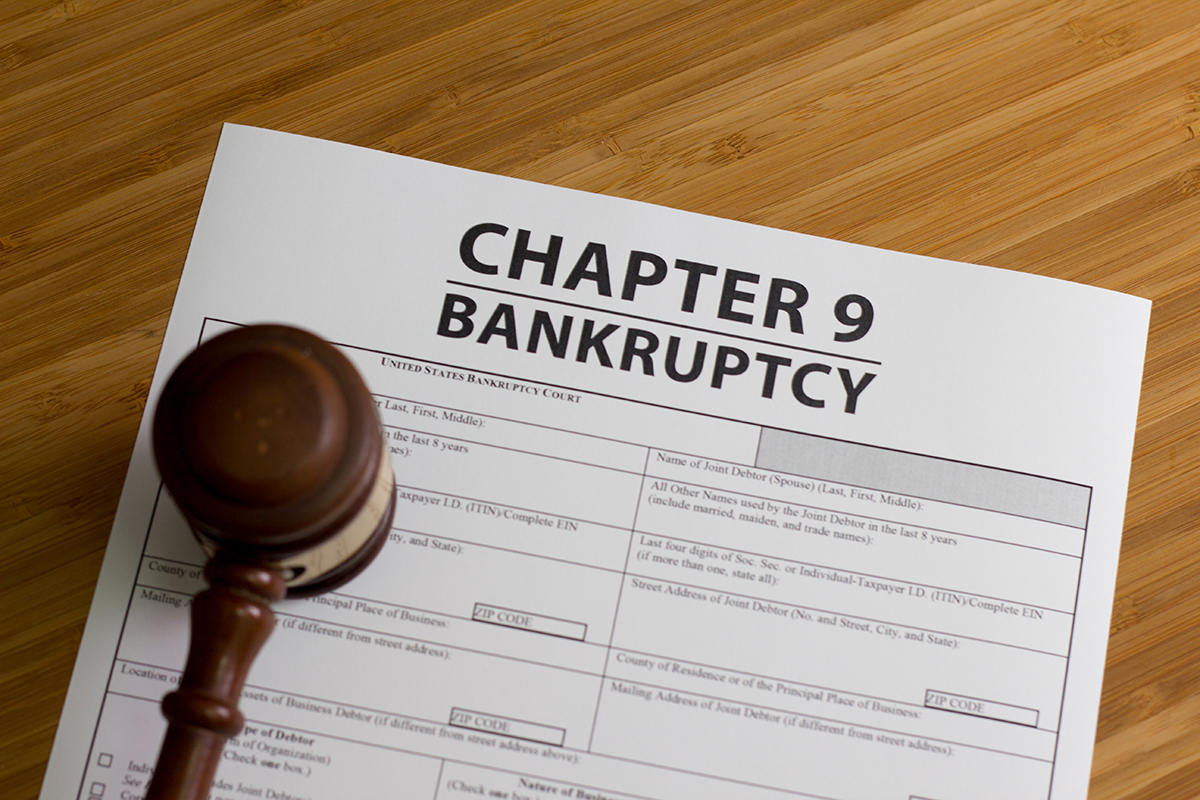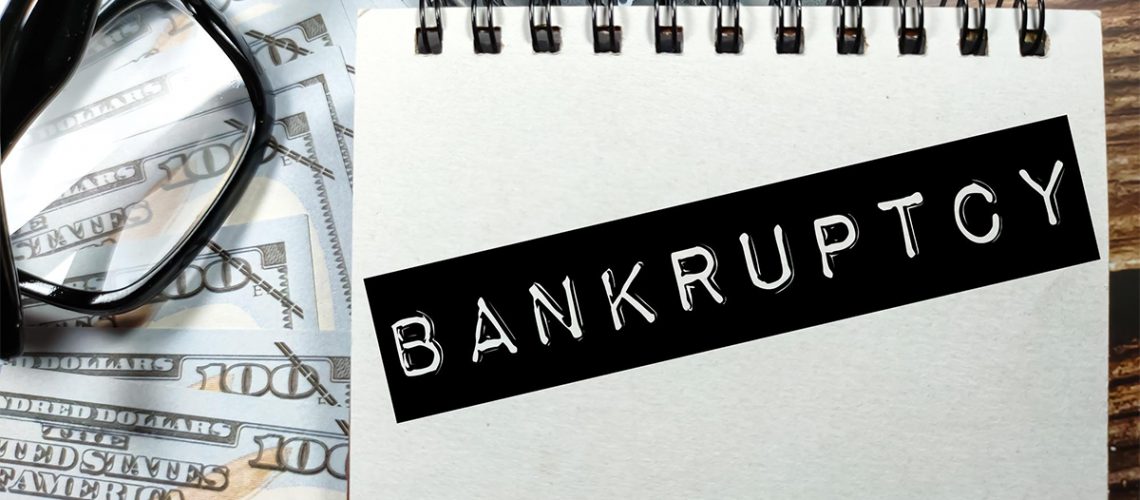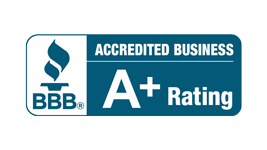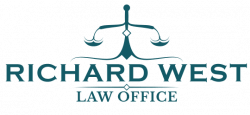What is Bankruptcy?
Bankruptcy is a legal mechanism that provides individuals and businesses with a fresh financial start when they are overwhelmed by debt. This helps individuals and businesses who can no longer pay their outstanding debts obtain relief by wiping out or restructuring debts, depending on the type of bankruptcy filed.
Bankruptcy can provide a way for individuals and businesses to regain control of their finances and start anew.

Who Files for Bankruptcy?
Individuals from various walks of life turn to bankruptcy as a solution to their financial difficulties. While businesses also file for bankruptcy, the majority of bankruptcy cases involve individuals seeking relief from overwhelming debt.
There are numerous reasons why people file for bankruptcy. Many individuals find themselves burdened with substantial debts that they simply cannot manage, such as:
- Auto loans
- Credit card debt
- Medical debt
- Mortgage
- Student loans
Others may use bankruptcy as a financial planning tool to restructure their debts and regain control of their finances.
Bankruptcy provides individuals with a fresh start by eliminating or reducing their outstanding debts. It allows them to create a manageable repayment plan and, in some cases, discharge remaining debts.
By filing for bankruptcy, individuals have the opportunity to regain stability and gain a clean slate in their financial lives.
Why Do People File for Bankruptcy?
There are several reasons why people file for bankruptcy, with the top five being:
- Divorce
- Job loss
- Medical bills
- Poor financial decisions
- Unexpected emergencies
Divorce can have a significant impact on one’s financial situation, often leading to a division of assets and an increase in expenses. This, coupled with the emotional toll, can result in individuals seeking bankruptcy protection.
Similarly, medical bills can be a major burden, especially for those without adequate insurance coverage or faced with unexpected medical emergencies.
Poor financial decisions, such as overspending, mismanagement of credit cards, or taking on excessive debts, can quickly lead to financial instability. The accumulation of debt eventually becomes unmanageable and can only be resolved through bankruptcy.
Job loss is another common reason for bankruptcy filings. Sudden unemployment can cause a significant decrease in income, making it difficult for individuals to meet their financial obligations.
In such circumstances, bankruptcy can provide relief and a chance to rebuild financial stability.
Unexpected emergencies, such as natural disasters or major accidents, can lead to significant financial strain. These unforeseen events often result in substantial expenses that individuals may not be able to cover, ultimately necessitating bankruptcy.

Types of Bankruptcy
There are different types of bankruptcies, each designed to address specific financial situations.
Chapter 7 Bankruptcy
Chapter 7 bankruptcy is a form of bankruptcy that involves the liquidation of assets to repay creditors. It is commonly filed by individuals who are unable to meet their financial obligations and seek relief from overwhelming debt. [1]
One key aspect of Chapter 7 bankruptcy is the prioritization of secured creditors for payment. Secured creditors hold a claim on specific assets, such as a car or a home, which serve as collateral for the debt owed.
These creditors have the right to recover the value of the collateral before any payments are made to unsecured creditors. In the liquidation process, non-exempt assets owned by the debtor are sold, and the proceeds are distributed among the secured creditors.
Once these debts have been satisfied, any remaining unsecured debts are discharged. This means that the debtor is no longer personally responsible for those debts and can have a fresh financial start.
Chapter 7 bankruptcy does have its drawbacks. Stockholders in a business that files for Chapter 7 may not receive payment since their claims are typically ranked below those of secured and unsecured creditors.
Chapter 11 Bankruptcy
Chapter 11 bankruptcy provides businesses with a mechanism to create a plan for debt repayment while still operating. It allows companies to reorganize and restructure their finances, aiming to regain profitability and financial stability. [2]
One of the key benefits of Chapter 11 bankruptcy is that it enables businesses to stay operational while working towards resolving their financial difficulties. This is vital in:
- Maintaining customer relationships
- Maximizing the value of the business as a going concern
- Preserving jobs
By having the opportunity to restructure debt, negotiate with creditors, and develop a repayment plan, companies can lay the foundation for a successful turnaround.
Chapter 11 bankruptcy does come with potential negative consequences as well. For instance, the announcement of the bankruptcy filing can lead to a drop in share prices and erode investor confidence.
The bankruptcy process can involve significant costs, including legal fees and other professional expenses. Furthermore, the company’s management may be replaced or have to relinquish control to a bankruptcy trustee appointed by the court.

Chapter 13 Bankruptcy
Chapter 13 bankruptcy is designed to provide individuals with a viable solution for managing their debts while maintaining control of their assets.
Unlike Chapter 7 bankruptcy, which involves liquidating assets to pay off creditors, Chapter 13 focuses on debtor reorganization and repayment plans.
One of the key features of Chapter 13 bankruptcy is the emphasis on creating a feasible repayment plan. This plan is typically structured to last three to five years, allowing individuals to repay as much of their debts as possible.
By formulating a repayment plan, debtors can work towards satisfying their creditors while maintaining an affordable monthly payment.
To be eligible for Chapter 13 bankruptcy, individuals must have a regular income sufficient to cover their living expenses and the proposed repayment plan.
This requirement ensures that debtors have the means to meet their obligations and demonstrates their commitment to resolving their financial difficulties.
Other Types of Bankruptcies
In addition to Chapter 13 bankruptcy, which focuses on repayment plans for individuals, there are other types of bankruptcies available for different purposes and entities.
Understanding these bankruptcy options can help individuals and organizations choose the most suitable path to address their financial difficulties.
Chapter 9 bankruptcy is specifically designed for municipalities, such as cities, towns, counties, and school districts. It allows them to restructure their debts while continuing to provide essential public services to the community.
This type of bankruptcy was created to provide a framework for financially distressed municipalities to effectively manage their outstanding debts.
Chapter 10 bankruptcy, on the other hand, is designed for small businesses. This option allows eligible debtors to restructure their debts and create a feasible plan for repayment.
Chapter 10 bankruptcy is particularly advantageous for small businesses as it provides a legal process that can help them overcome financial difficulties and continue operations.
Chapter 12 bankruptcy is specifically aimed at family farmers or family fishermen. It provides them with the opportunity to reorganize their debts and create a workable repayment plan over a period of time.
This type of bankruptcy acknowledges the unique financial challenges faced by family farmers and fishermen and provides them with the necessary tools to retain their farms or fishing businesses.
By understanding the characteristics and purposes of each type of bankruptcy, individuals and organizations can make informed decisions about which option is best suited to their specific circumstances.

Understanding the Impact on Credit Scores
Bankruptcy can significantly lower credit scores, making it difficult for individuals to obtain new credit or loans in the future. The duration that bankruptcy stays on credit reports also varies depending on the type of bankruptcy filed.
For Chapter 7 bankruptcy, it remains on credit reports for ten years, while Chapter 13 bankruptcy stays on credit reports for seven years.
Despite the initial negative impact on credit scores and reports, studies have shown that credit scores can actually bounce back after bankruptcy, especially when individuals take steps to rebuild their credit. This can be done by making timely payments on any remaining debts, using secured credit cards responsibly, and practicing good financial habits.
The extent of the increase, however, can vary depending on several factors. These include the type of bankruptcy filed (Chapter 7 or Chapter 13) and whether the filer successfully completed the bankruptcy process.
If you are having difficulty managing your debt, our attorneys at the law office of Richard West can help. Contact us today for a free consultation.
Sources:
[1] Chapter 7 – Bankruptcy Basics. (n.d.). United States Courts. https://www.uscourts.gov/services-forms/bankruptcy/bankruptcy-basics/chapter-7-bankruptcy-basics
[2] Chapter 11 – Bankruptcy Basics. (n.d.). United States Courts. https://www.uscourts.gov/services-forms/bankruptcy/bankruptcy-basics/chapter-11-bankruptcy-basics




